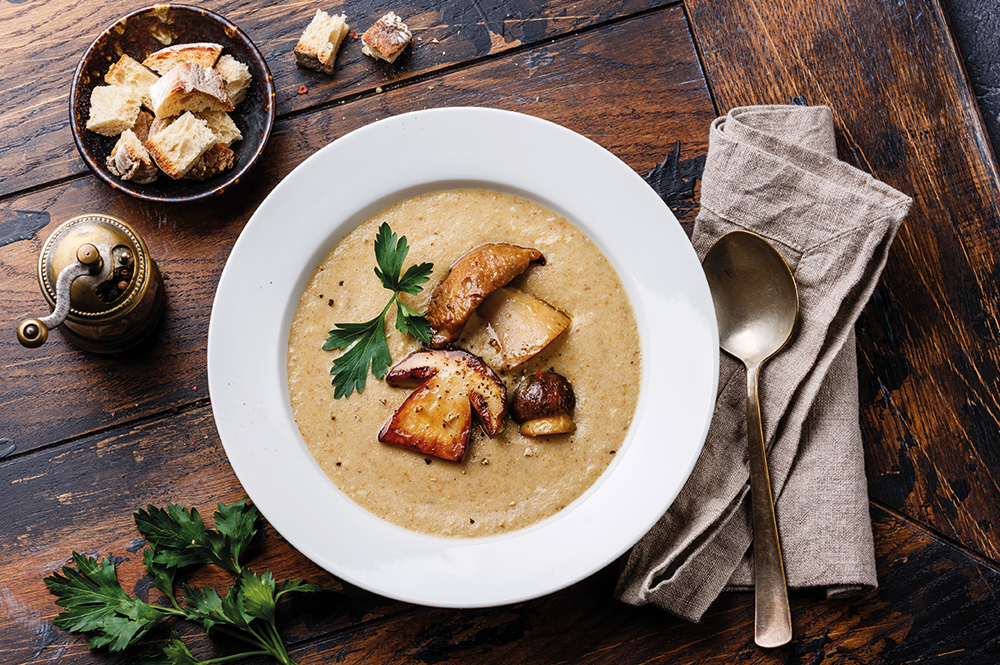Alex Rushmer extols the virtues of the humble soup and, in particular, the traditional Tuscan potage, ribollita
At Vanderlyle, we take great joy in soups. A small bowl of something intensely flavoured, seasonal and velvety smooth has been a feature of the menu ever since we opened. It forms the final element of a series of small dishes and snacks before the main body of the meal begins.
We usually aim to create concentrated flavours where a single ingredient is allowed to shine, bolstered only by a tried-and-tested sofrito or mirepoix of carrots, celery and onion, then cooked down with nothing but a little water (never stock) and seasoning, then blitzed in a blender as powerful as my first car. There is something indulgent about a soup, especially when silky and flavoured with a pep and punch that tastes of the essence of the vegetable it is made from.
There is, of course, another sort of soup. One that is less about concentration of flavour, poise and finesse and more about heartiness, robust, punchy flavours and using up an excess of ingredients. These are the soups of historical poverty and necessity – potages made of leftovers and scraps that burble away for hours (or days), meld and evolve into gastronomic gold from leaden ingredients: culinary alchemy in its finest and purest form.
They crop up throughout the culinary traditions of countries worldwide and often resemble something closer to a stew than a soup: scotch broth, Jewish chicken soup, pot-au-feu, pork ramen – I would happily sit down to a bowl of any one of these, have my fill and drift into a happy meeting with the god of sleep, Somnus, with a belly full of carbs, vegetables and a broth that sings of long, slow cooking and a rich variety of ingredients and flavours.
Throw everything together and see what happens
My current favourite, though, is ribollita, a Tuscan take on this ‘throw everything together and see what happens’ soup making. It begins, of course, with carrot, celery and onion diced small and cooked slowly in olive oil until soft and sweet. Greens, beans, cheese (parmesan, of course) and stale bread provide substance and the liquid could be stock, tomatoes or water, but there is no proscriptive recipe: it is a soup designed specifically to help empty the cupboards or fridge drawer and make use of gnarly bits of brassica stem or leftover quarter-bunches of herbs.
The name, meaning ‘reboiled’, speaks of its happy-go-lucky nature. Traditionally, it would sit in a large pot for several days developing character and substance, reheated as necessity dictated, and added to as the pot emptied. What better way to welcome an unexpected guest, chilled to the bone from a walk through the Tuscan winter, than with a bowl of something robust and truly heartening?
This, of course, is not a soup to make in small batches and, because the blender doesn’t get a look in, there will be some chopping involved, but how committed you are to spending time with knife and board is entirely up to you, and an unrefined soup with noticeable chunks of vegetables is not necessarily a bad thing.
I suggest you set aside half an hour or so to peel, chop, prepare and sauté the vegetables, then another 45 minutes to let the soup burble away. A Sunday afternoon spent making ribollita is time well spent, and when you can smugly have lunch on the table in just a few minutes, future you will be eternally grateful. Well, at least until you run out.
Find Alex’s fluid recipe for ribollita here

